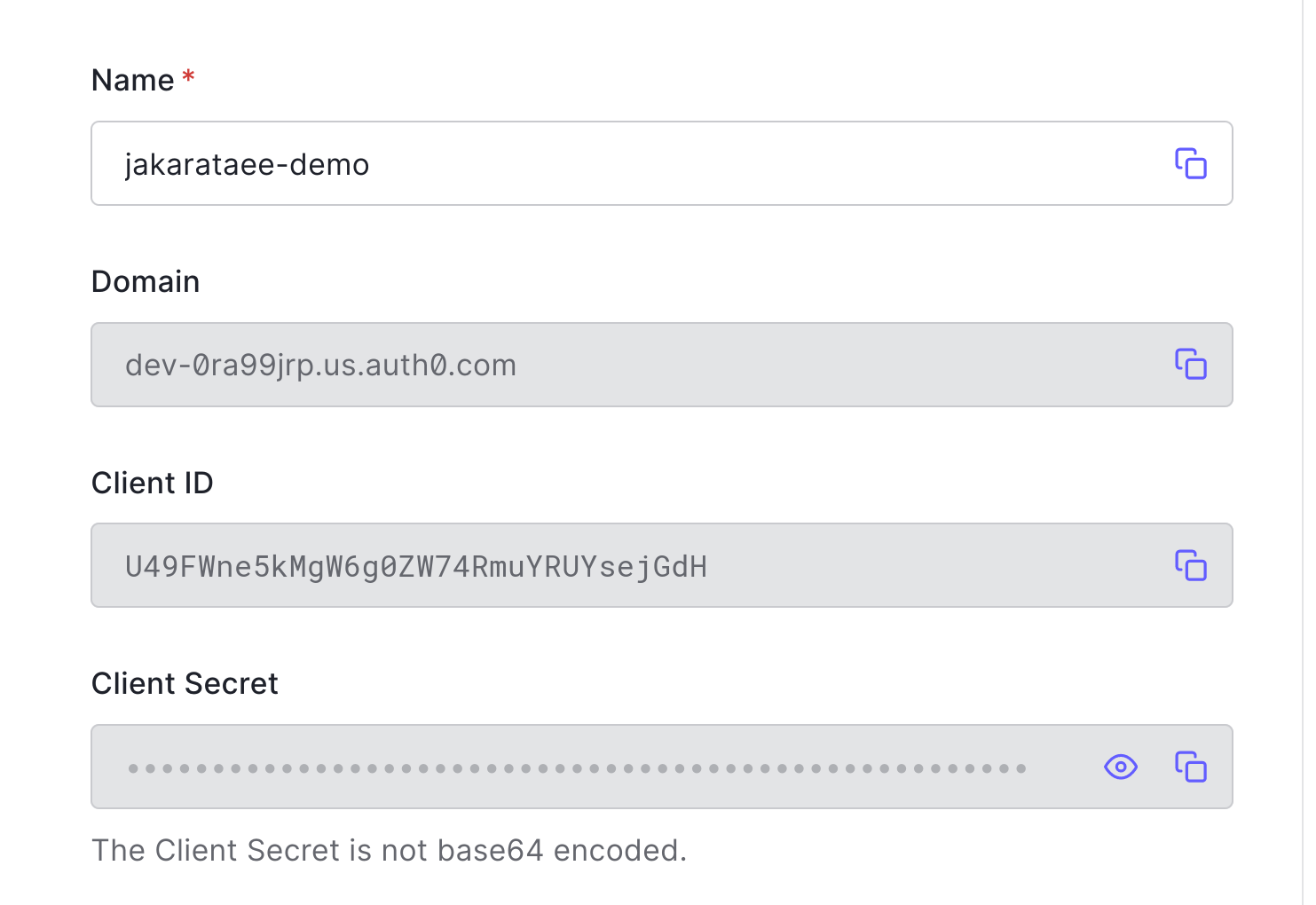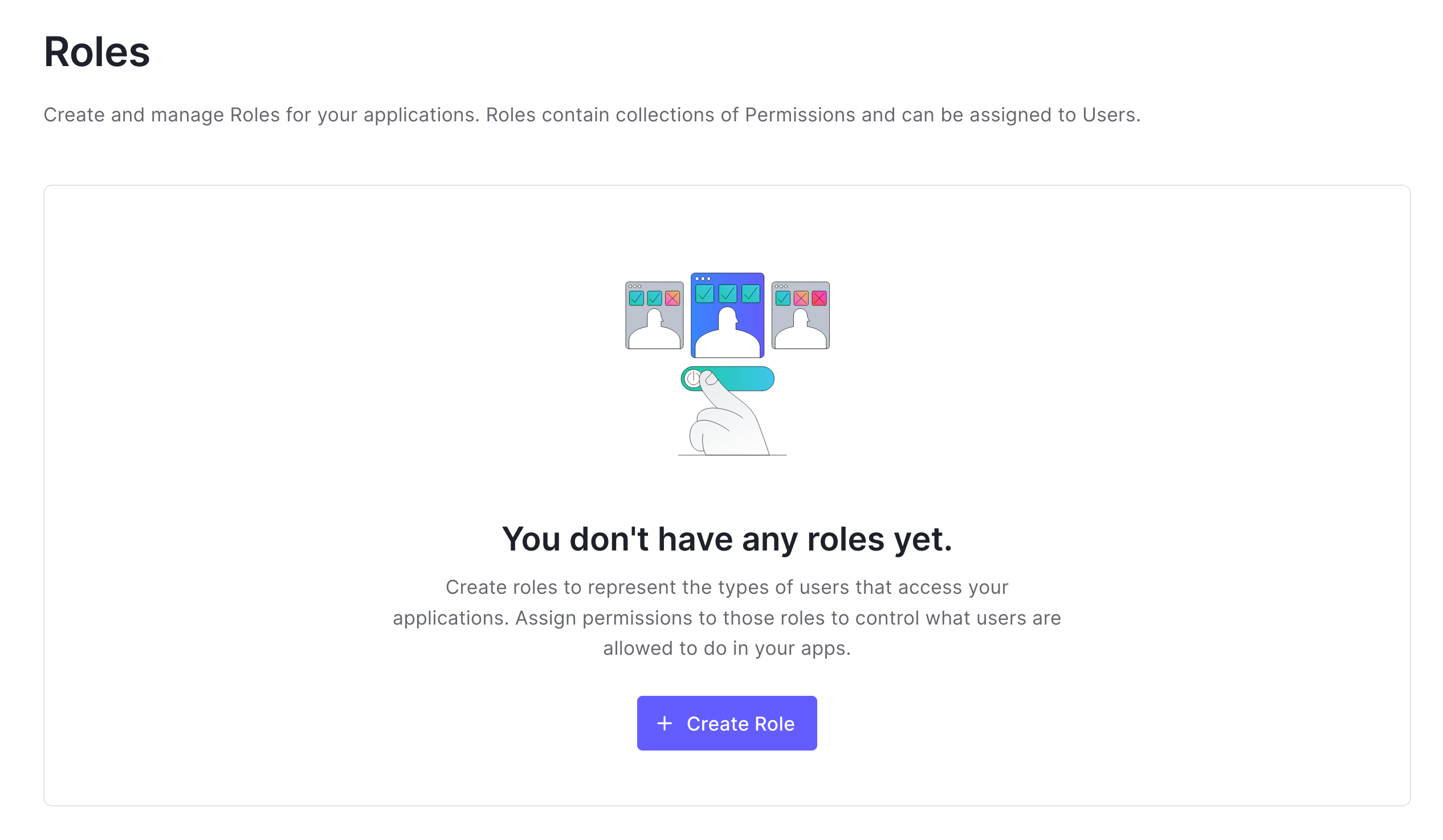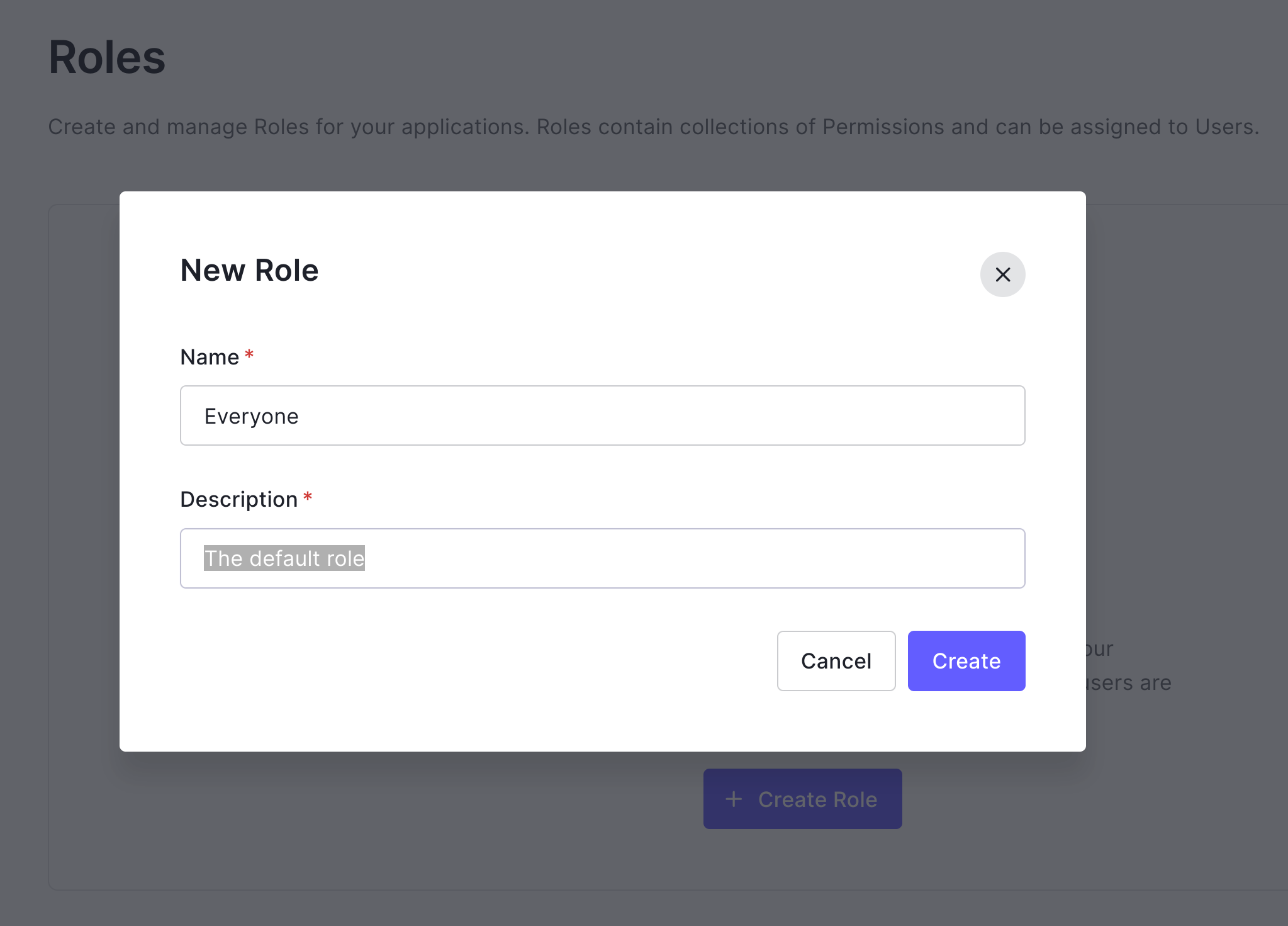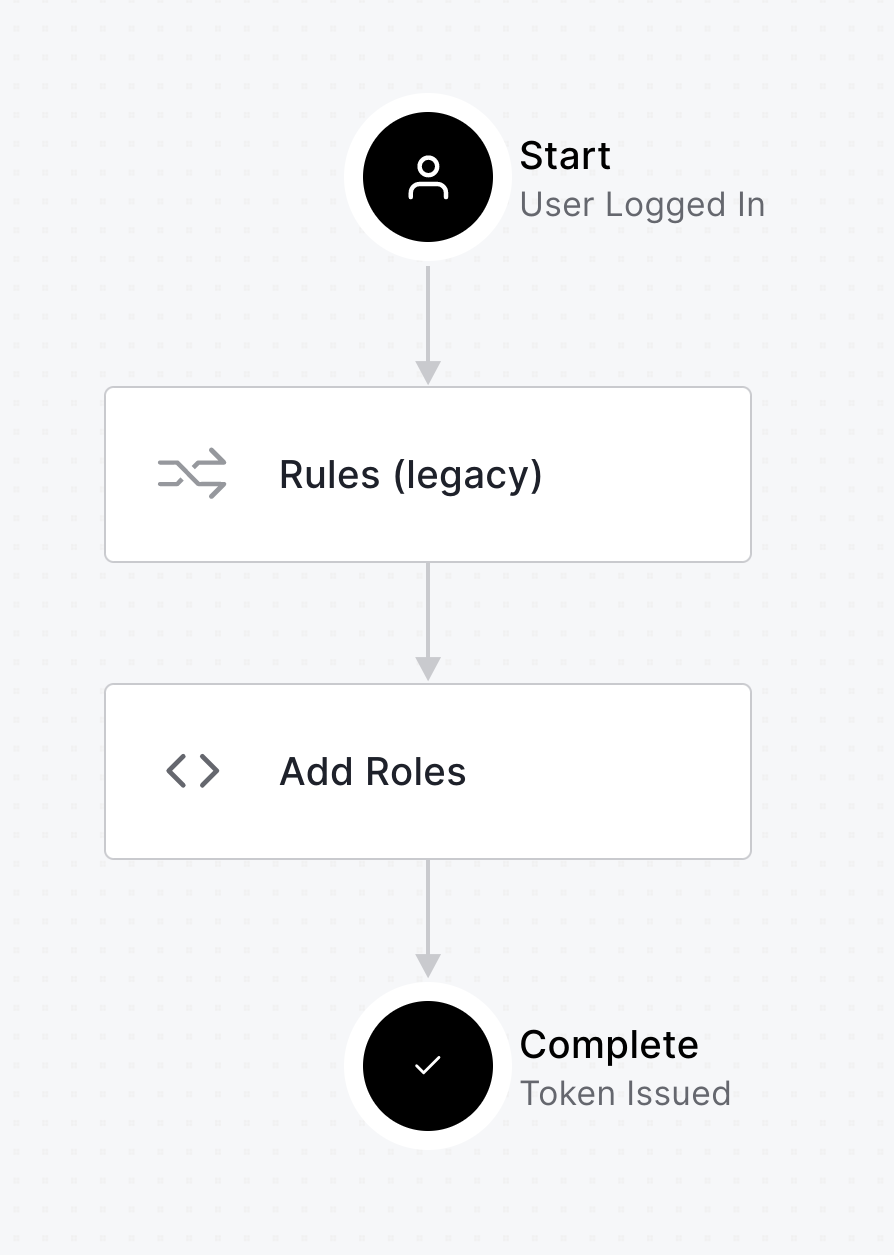Jakarta EE 10 includes a new authentication mechanism: OpenID Connect! This can be added to a Jakarta EE servlet using the new
@OpenIdAuthenticationMechanismDefinitionThis tutorial will show you how to implement a web application with OpenID Connect (OIDC) authentication and use Auth0 as the OIDC provider. You will also see one way to secure an API and authenticate using JSON Web Tokens (JWTs). This will all be accomplished using WildFly as the Jakarta EE runtime.
This stack includes a lot of technologies. I'm going to introduce them briefly below. If you're comfortable with all those terms and just want to get to the code, feel free to skip ahead to the prerequisites section.
Jakarta EE vs Java EE
Jakarta EE is Jakarta Enterprise Edition, formerly known as Java EE. The name and framework packages were migrated when Oracle gave Java EE to the Eclipse Foundation because Oracle still has the rights to the Java brand and did not open-source absolutely everything in the
javax.*javaxjakartaEnterprise Edition is built on top of Jakarta (that is, Java) SE or Standard Edition. Jakarta SE is the more lightweight Java version that provides a basic cross-platform runtime. Enterprise Edition is assumed to run on an application server and adds libraries for larger-scale, multi-user applications.
What about Java SE?
To run a Java SE application, you only need the JRE (Java runtime environment) for a compatible version of Java. Enterprise Edition, however, requires a complete runtime environment and has many more possible modules and configuration options. To see a list of Jakarta EE-compatible products, you can look at the Jakarta website. A few examples are Open Liberty, Payara, WildFly, GlassFish, and TomEE.
As of the time I wrote this tutorial, Jakarta EE 10 was a very new release, and only three frameworks supported version 10: Eclipse GlassFish, Payara Server Community, and WildFly.
WildFly for Jakarta EE 10
I chose to use WildFly as my Jakarta EE runtime. Hantsy Bai created a great example project that was a big help. Check out the GitHub project repository page. Thanks, Hantsy Bai! Super helpful.
WildFly is an open-source community project sponsored by Red Hat. It bills itself as a "flexible, lightweight, managed application runtime" that is "based on Jakarta EE and provides rich enterprise capabilities in easy-to-consume frameworks that eliminate boilerplate and reduce technical burden." It is a modular, standards-based runtime for Jakarta EE applications.
Jakarta Security 3.0
The exciting thing about Jakarta EE 10 (from a security perspective) is that it includes a new OIDC implementation in the Security 3.0 specification. OpenID Connect is an authentication protocol. Many third-party vendors, such as Auth0 and Okta, implement this protocol, making it relatively easy to add secure login to an application. Jakarta EE 10 Security 3.0 provides an annotation-based configuration to add OIDC authentication to servlets.
You can check out the docs for Jakarta EE 10 Security 3.0 OIDC here.
Prerequisites
Before you start, please ensure the following prerequisites are installed (or install them now).
- Java 17: or use SDKMAN! to manage and install multiple versions (the Jakarta EE spec says 11 and up is supported, but I wrote this tutorial assuming version 17)
- Auth0 CLI: the Auth0 command-line interface
- HTTPie: a simple tool for making HTTP requests from a Bash shell
You will need a free Auth0 developer account if you don't already have one. Go ahead and sign up for an Auth0 account using their sign-up page.
Clone this tutorial's example from its GitHub repository.
git clone https://github.com/oktadev/auth0-jakarta-ee-oidc-example.git
Jakarta EE Example Project Overview
I won't reproduce the entire
pom.xmlFirst, take a look at the dependencies. The only dependency required for Jakarta EE is the first one (
jakarta.jakartaee-api<dependencies> <dependency> <groupId>jakarta.platform</groupId> <artifactId>jakarta.jakartaee-api</artifactId> <version>${jakartaee-api.version}</version> <scope>provided</scope> </dependency> </dependencies>
The WildFly plugin is included and configured in the block below.
<plugin> <groupId>org.wildfly.plugins</groupId> <artifactId>wildfly-maven-plugin</artifactId> <version>${wildfly-maven-plugin.version}</version> <configuration> <commands> <command>/subsystem=undertow/application-security-domain=other:write-attribute(name=integrated-jaspi, value=false)</command> <command>reload</command> </commands> </configuration> </plugin>
The docs for the WildFly Maven plugin are here. Except for the cryptic
<command></command>It took a little digging to figure out, but the obscure command block is required, at least according to the experts I asked. It disables integrated JASPI (Java Authentication SPI for Containers) in the server and delegates validation of credentials to a non-integrated
ServerAuthModuleThere's also a Maven
unpackProject Structure and Configuration
The files in the
src- the OIDC-protected servlet;
- the API servlet protected by a JWT authentication filter; and
- an unprotected servlet.
src └── main ├── java │ └── com │ └── demo │ ├── ApiServlet.java // API protected by filter │ ├── CallbackServlet.java // OIDC callback handler │ ├── JwtFilter.java // Verifies JWT and secures ApiServlet │ ├── OidcConfig.java // Loads oidc.properties │ ├── ProtectedServlet.java // OIDC-handling servlet endpoint │ └── PublicServlet.java // Public endpoint ├── resources │ ├── META-INF │ │ ├── beans.xml // Declare some provided dependencies for deployment │ │ └── MANIFEST.MF // Configure CDI (Contexts and Dependency Injection) │ ├── logging.properties // Simple console logging configuration │ └── oidc.properties // OpenID Connect config properties └── webapp └── WEB-INF └── jboss-web.xml // Configures context root to '/'
When the application loads, the OpenID Connect properties are loaded from
oidc.propertiesOidcConfigJwtFilterProtectedServlet@OpenIdAuthenticationMechanismDefinitionThe
jboss-web.xml/Neither of the files in the
META-INFbeans.xmlMANIFEST.MFCreate an Auth0 OIDC Application
If you have not already, install the Auth0 CLI and run
auth0 loginWaiting for the login to complete in the browser... done ▸ Successfully logged in. ▸ Tenant: dev-0xb84jzp.us.auth0.com
Take note of the domain listed as the tenet. This is your Auth0 domain. If you need to find it again later, you can use
auth0 tenants listNow use the Auth0 CLI to create an OpenID Connect (OIDC) application. From the project base directory, run the following.
auth0 apps create
Use the following values:
- Name:
jakartaee-demo - Description: whatever you like, or leave blank
- Type:
Regular Web Application - Callback URLs:
http://localhost:8080/callback - Allowed Logout URLs:
http://localhost:8080
The console output shows you the Auth0 domain and the OIDC client ID. However, you also need the client secret. With the 1.0 version of the Auth0 CLI, you can show the client secret by adding
--reveal-secretsapps createauth0 apps open
Select the OIDC app (or client) you just created from the list. This will open the OIDC application on the Auth0 dashboard.

Fill in the three values in
src/main/resources/oidc.propertiesdomain=<your-auth0-domain> clientId=<your-client-id> clientSecret=<your-client-secret>
You also need to fill in your domain in the
ProtectedServlet.javaOpenIdAuthenticationMechanismDefinitionextraParameters<your-auth0-domain>src/main/java/com/demo/ProtectedServlet.java@OpenIdAuthenticationMechanismDefinition( clientId = "${oidcConfig.clientId}", clientSecret = "${oidcConfig.clientSecret}", redirectURI = "${baseURL}/callback", providerURI = "${oidcConfig.issuerUri}", jwksConnectTimeout = 5000, jwksReadTimeout = 5000, extraParameters = {"audience=https://<your-auth0-domain>/api/v2/"}, // <-- YOUR DOMAIN HERE claimsDefinition = @ClaimsDefinition(callerGroupsClaim = "http://www.jakartaee.demo/roles") )
There must be a way to use the
extraParametersExpressionConfigure Roles on Auth0
Managing roles is a feature that is being added in the upcoming Auth0 CLI 1.0 version that's currently in beta. What I'll show you below is how to do it in the dashboard.
Open your Auth0 developer dashboard. You need to create a role, assign your user to that role, and create an action that will inject the roles into a custom claim in the JWT.
Under User Management, click on Roles. Click the Create Role button.

Name the role
Everyone
The
EveryoneYou've now created a role and assigned yourself to it. But this information will not be passed along in the JWT without a bit of customization. The current best practice is to do this using actions.
Select Actions from the left menu in the developer dashboard. Click on Flows. Select Login.
Add a new action by clicking on the + symbol to the right of Add Action. Select Build Custom.
Give the action a Name, such as
Add Roles
Change the code for the action to the following.
exports.onExecutePostLogin = async (event, api) => { const namespace = 'http://www.jakartaee.demo'; if (event.authorization) { api.idToken.setCustomClaim('preferred_username', event.user.email); api.idToken.setCustomClaim(`${namespace}/roles`, event.authorization.roles); api.accessToken.setCustomClaim(`${namespace}/roles`, event.authorization.roles); } }
Click on Deploy.
Click on the Add to flow link in the popup window that slides in (if you miss this, you can find the new action under the custom action tab back in the flow panel).
Drag the Add Roles action over under the Rules (legacy) action.

Click Apply (top right of the panel).
Explore the ProtectedServlet
and OIDC Flow
ProtectedServletLet's look at the
ProtectedServletsrc/main/java/com/demo/ProtectedServlet.javapackage com.demo; ... // This globally defines the OIDC configuration (but does not itself secure the method) @OpenIdAuthenticationMechanismDefinition( clientId = "${openIdConfig.clientId}", clientSecret = "${openIdConfig.clientSecret}", redirectURI = "${baseURL}/callback", providerURI = "${openIdConfig.issuerUri}", jwksConnectTimeout = 5000, jwksReadTimeout = 5000, extraParameters = {"audience=https://<your-auth0-domain>/api/v2/"}, // <-- YOUR AUTH0 DOMAIN HERE claimsDefinition = @ClaimsDefinition(callerGroupsClaim = "http://www.jakartaee.demo/roles") ) // This actually secures the methods in the servlet @WebServlet("/protected") @ServletSecurity( @HttpConstraint(rolesAllowed = "Everyone") ) public class ProtectedServlet extends HttpServlet { @Inject private OpenIdContext context; @Inject SecurityContext securityContext; @Override protected void doGet(HttpServletRequest request, HttpServletResponse response) throws IOException { var principal = securityContext.getCallerPrincipal(); var name = principal.getName(); String html = """ <div style="margin: 0 10%%; width: 80%%; overflow-wrap: anywhere;"> <h1>Protected Servlet</h1> <p>principal name: %s </p> <p>access token (type = %s):</p> <p>%s</p> <p>preferred_username: %s</p> <p>roles: %s</p> <p>claims:</p> <p>%s</p> </div> """.formatted( name, context.getTokenType(), context.getAccessToken(), context.getClaimsJson().get("preferred_username").toString(), context.getClaimsJson().get("http://www.jakartaee.demo/roles").toString(), context.getClaimsJson() ); response.setContentType("text/html"); response.getWriter().print(html.toString()); } }
The
@OpenIdAuthenticationMechanismDefinitionThe first four parameters set the required OIDC values. I had to increase the timeout values to avoid an intermittent error. The
extraParametersaudienceclaimsDefinitionThe
@OpenIdAuthenticationMechanismDefinitionThe security constraint is added by
@ServletSecurityEveryoneThe other annotation,
@WebServlet("/protected")CDI (Context and Dependency Injection) is used to inject two dependencies: the
OpenIdContextSecurityContextWhen a user that is not authenticated attempts to load this resource, they are redirected to Auth0 for authentication. From a browser, the user sees Auth0's login screen. After successfully logging in, the user is redirected back to the
/callback/callbackAt this point, the user is successfully authenticated. If you look at the callback servlet (shown below), you'll see that it simply redirects the user back to the
/protectedLog in to the App Using Auth0 SSO and OpenID Connect
Give it a try. Start the app.
./mvnw wildfly:run
Wait a few seconds for it to finish loading.
Open a browser to the protected page at
http://localhost:8080/protectedYou'll have to authorize the app with Auth0. You may also have to log in if you are not already logged in. After that, you should be redirected back to the protected page, which will print out some information from the token.
Success! You've got a working Jakarate EE application secured with OIDC and OAuth 2.0.
Protected Servlet principal name: andrewcarterhughes+test@gmail.com access token (type = Bearer): eyJhbGciOiJSUzI1NiIsInR5cCI6IkpXVCIsImtpZCI6Im5yMWZwWVlkb3JkalEybzRlREp6MiJ9.eyJodHRwOi8vd3d3Lmpha2FydGFlZS5kZW1vL3JvbGVzIjpbIkV2ZXJ5b25lIl0sImlzcyI6Imh0dHBzOi8vZGV2LTByYTk5anJwLnVzLmF1dGgwLmNvbS8iLCJz... preferred_username: "andrewcarterhughes+test@gmail.com" roles: ["Everyone"] claims: {"sub":"auth0|638e36302e342504ae92b911","nickname":"andrewcarterhughes+test","preferred_username":"andrewcarterhughes+test@gmail.com","name":"andrewcarterhughes+test@gmail.com","picture":"https://s.gravatar.com/avatar/146a9ec7b0773b3edc6a299d7ad5dbb0?s=480&r=pg&d=https%3A%2F%2Fcdn.auth0.com%2Favatars%2Fan.png","updated_at":"2023-02-18T04:37:30.403Z","email":"andrewcarterhughes+test@gmail.com","email_verified":true,"http://www.jakartaee.demo/roles":["Everyone"]}
Make sure you see
roles: ["Everyone"]http://www.jakartaee.demo/roles":["Everyone"]Next, you'll see how to secure an API method on the app and use the token you just retrieved to access the secured API method. Directly below, however, is a summary of the OIDC login flow for people not already familiar with it.
OpenID Connect Authentication Flow Summary
For people new to OAuth and OIDC, this is a summary of what just happened when you accessed the
protected- Client requests
./protected - Jakarta EE Security 3.0 intercepts this request based on OIDC configuration and authentication requirement for the endpoint and redirects to Auth0 for authentication.
- Upon successful authentication, Auth0 redirects back to
endpoint, sending the authorization code./callback - Jakarta EE Security 3.0 intercepts the request to the
endpoint and sends the authorization code back to Auth0./callback - Auth0 accepts the authorization code, verifies it, and returns an access token (and possibly an identity token) to the Jakarta EE Security 3.0 framework.
- The client receives the access token, unpacks it, and verifies it. Once the token is verified, the user is authenticated. The
method is run, which programmatically redirects back to thecallback
endpoint./protected - Before the
endpoint is run, the/protected
annotation requirement is checked. If the user is a member of the@ServletSecurity
group, theEveryone
method is called.ProtectedServlet.doGet() - Finally, the
method is called.ProtectedServlet.doGet()
All of that happened above when you logged into Auth0 and loaded the protected servlet. Since this servlet handily prints out the JWT, I thought it would be nice to see how to secure a web API using a JWT, which is what you'll see in the next section.
Use the JWT to Access the Protected API
Your secured API method will not perform all of the redirecting of the OIDC flow. Instead, it will simply decode and validate the JWT. Take a look at the
ApiServlet.javasrc/main/java/com/demo/ApiServlet.javapackage com.demo; ... @WebServlet("/api/protected") public class ApiServlet extends HttpServlet { @Override protected void doGet(HttpServletRequest request, HttpServletResponse response) throws IOException { DecodedJWT jwt = (DecodedJWT) request.getAttribute("accessToken"); IdToken idToken = (IdToken) request.getAttribute("idToken"); response.setContentType("text/plain"); response.getWriter().println("Welcome, " + idToken.email); response.getWriter().println("accessToken claims:" + jwt.getClaims()); response.getWriter().println("idToken claims:" + idToken.toString()); } }
By itself, this servlet is not secured. It would be public without the
JwtFilter/api/*src/main/java/com/demo/JwtFilter.javapackage com.demo; ... @WebFilter(filterName = "jwtFilter", urlPatterns = "/api/*") public class JwtFilter implements Filter { private static final Logger LOGGER = Logger.getLogger(JwtFilter.class.getName()); @Inject OidcConfig oidcConfig; @Override public void init(FilterConfig filterConfig) { LOGGER.info("Auth0 jwtVerifier initialized for issuer:" + oidcConfig.getIssuerUri()); } @Override public void doFilter(ServletRequest servletRequest, ServletResponse servletResponse, FilterChain chain) throws IOException, ServletException { HttpServletRequest request = (HttpServletRequest) servletRequest; HttpServletResponse response = (HttpServletResponse) servletResponse; LOGGER.info("In JwtFilter, path: " + request.getRequestURI()); // Get access token from authorization header String authHeader = request.getHeader("authorization"); if (authHeader == null) { response.setStatus(HttpServletResponse.SC_UNAUTHORIZED); response.getOutputStream().print("Unauthorized"); return; } else { // Get the access token from the header String accessToken = authHeader.substring(authHeader.indexOf("Bearer ") + 7); LOGGER.info("accesstoken: " + accessToken); JwkProvider provider = new UrlJwkProvider(oidcConfig.getIssuerUri()); try { // Decode the access token DecodedJWT jwt = JWT.decode(accessToken); // Get the kid from received JWT token Jwk jwk = provider.get(jwt.getKeyId()); Algorithm algorithm = Algorithm.RSA256((RSAPublicKey) jwk.getPublicKey(), null); // Verify the access token JWTVerifier verifier = JWT.require(algorithm) .withIssuer(oidcConfig.getIssuerUri()) .build(); jwt = verifier.verify(accessToken); LOGGER.info("JWT decoded. sub=" + jwt.getClaims().get("sub")); // Save the access token in a request attribute request.setAttribute("accessToken", jwt); // Get the ID Token String issuerUri = oidcConfig.getIssuerUri(); String userinfoUri = issuerUri + "userinfo"; LOGGER.info("userinfoUri: " + userinfoUri); HttpClient client = HttpClient.newHttpClient(); HttpRequest requestIdToken = HttpRequest.newBuilder( URI.create(userinfoUri)) .header("Authorization", "Bearer " + accessToken) .build(); HttpResponse<String> responseIdToken = client.send(requestIdToken, HttpResponse.BodyHandlers.ofString()); String idTokenString = responseIdToken.body(); LOGGER.info("idTokenString: " + idTokenString); // Deserialize the ID token IdToken idToken = new Gson().fromJson(idTokenString, IdToken.class); LOGGER.info("idToken: " + idToken.toString()); // Save the id token in a request attribute request.setAttribute("idToken", idToken); } catch (JWTVerificationException | JwkException e) { ... } catch (InterruptedException e) { ... } } chain.doFilter(request, response); } @Override public void destroy() { } }
This code uses Auth0's JWT verifier for Java. Auth0 has good docs on JWT validation. If a valid JWT is found and decoded, it is saved in a request attribute. The access token, however, has minimal user information in it (just the user ID as the
subuserinfoIdTokenApiServletGive it a try. Start the project.
./mvnw wildfly:run
Make a request to the protected API endpoint (not the OIDC endpoint).
http :8080/api/protected
You'll get the following:
HTTP/1.1 401 Unauthorized
Now, use your OIDC endpoint to retrieve a token. Using a browser, open
http://localhost:8080/protectedAuthenticate with Auth0. When you are redirected back to the protected servlet page, copy the token value and save it as a variable in a new shell.
TOKEN=eyJraWQiOiJqY3dpbGpUcGVZSG1Jajl6ODR3LV...
In that same shell, make a request to the protected API endpoint using the token.
http :8080/api/protected "Authorization: Bearer $TOKEN"
It should return something like the following.
HTTP/1.1 200 OK Connection: keep-alive Content-Length: 401 Content-Type: text;charset=ISO-8859-1 Date: Tue, 23 Feb 2023 07:48:59 GMT Welcome, andrew.hughes@mail.com accessToken claims: { ... } idToken claims: { ... } ...
Keep Learning with Jakarta EE and Auth0
You just built a Jakarta Enterprise Edition application that used the new OpenID Connect annotation and implementation built into Jakarta EE 10. You used Auth0 as the OIDC and OAuth 2.0 provider and saw how to implement both SSO and JWT authentication.
You can find the source code for this example on GitHub in the @oktadev/auth0-jakarta-ee-oidc-example repository.
If you liked this post, there's a good chance you'll like similar ones:
- Secure Secrets With Spring Cloud Config and Vault
- Micro Frontends for Java Microservices
- Build a Simple CRUD App with Spring Boot and Vue.js
If you have questions, please ask them in the comments below! If you're into social media, follow us: @oktadev on Twitter, Okta for Developers on LinkedIn, and OktaDev on Facebook. If you like learning via video, subscribe to our YouTube channel.
About the author

